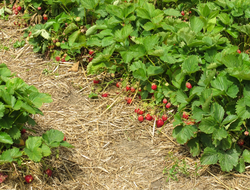Organic produce: Is it worth the extra cost?
Published: January 28, 2022
The organic food movement and industry have grown considerably over the last 70+ years.
Globally, organic food production is valued at US $59 billion.
In Canada, approximately 4000 organic farming operations produce $2 billion worth of food. In the US more than 13,000 organic farming operations produce much more.
People clearly have an appetite for organically grown produce and processed foods, but what differentiates organically grown produce from conventionally grown food?
All food is organic in that food contains carbon-carbon and carbon-hydrogen bonds (the chemical definition of organic).
However, organically grown food is identified as food, crops or livestock that have been grown according to regulations and standards set by government authorities.
For instance, the Canadian Food Inspection Agency (CFIA) and the United States Department of Agriculture (USDA).
Regulations and standards for organic certification may vary between countries.
In general regulations define the procedures for growing and processing foods that claim to be "organic".
Processed "organic" foods must contain a specific percentage of ingredients which must be organically grown.
The use of fertilizers, herbicides, insecticide, fungicides, preservatives, and other chemical ingredients used in the production of all organically certified foods is also regulated.
For example, in Canada and the US a loaf of bread that is certified as organic must contain...link to the full article to learn more.
References
1.
Whitney, E. & Rady Rolfes, S. (2005). Understanding Nutrition. Belmont, CA: Thomson Wadsworth
2.
3.
4.
6.
Center for Science in the Public Interest (2012, October). Nutrition Action Health letter

